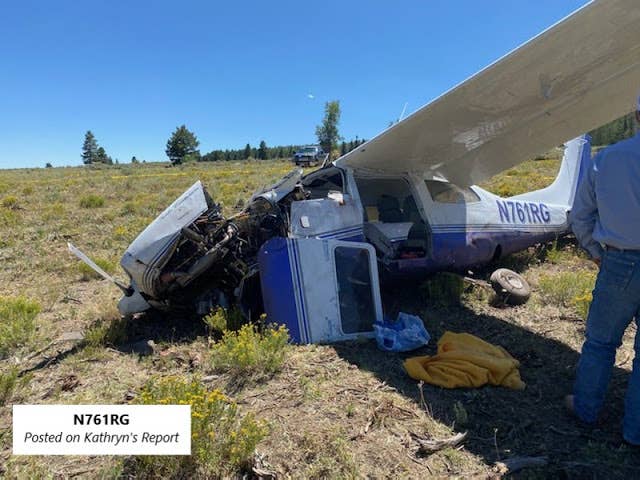When YouTube Clickbait Actually Has Value
We haven’t seen a better textbook example of how not to fly an emergency engine-out approach.

Credit: Kathryn’s Report
Andy Warhol famously remarked in the 1960s that "In the future, everyone will be world-famous for 15 minutes." What a failure of imagination. He simply couldn’t foresee the advent of cellphone cameras, GoPros and the vast digital sewage processing plant otherwise known as YouTube. Once upon a time, home movies were just that, but easy access to all the world’s eyeballs now means that anyone—and I mean anyone—can produce their own reality show and probably attract an audience of viewers too busy to actually attend train wrecks in person.
In that spirit, a friend of mine sent me the link to the YouTube video below knowing full well that like the cat after the nip, I would refuse comment on it until it just got to be too much. So here we are. Someone labeled it the Kardashians Go Flying and if you get the reference, you’ve been dragged far enough away from the lip of the crater to have your knees dangling in the abyss of cultural abasement.
But certainly, there’s redeeming value in everything, right? Usually, including this video that details the emergency engine-out landing of a Cessna T210 in Utah last August. To save you an overdose of irritation, I recommend confining your attention to the segment between 6:30 and about 8:00 on the video. The setup is this: The family was on an outing and having flown through a scenic canyon, the engine quit for unknown reasons, or appears to have. Right off the nose were three possible landing choices: an open field dotted with widely spaced trees, a beach on a lake and the lake itself.
In the comments, the pilot is lauded for steely eyed nerves and uncommon skill. And while it’s not my intention—or place—to denigrate the pilot’s judgment and actions, what the video shows is how not to handle an emergency engine-out approach. As an inveterate reader of accident reports, the scenario here is not so much common as not rare. Many engine-out situations end badly because the pilot gets too slow and even though a suitable landing site is available, a stall-mush or stall-spin intervenes to snatch defeat from the jaws of victory.
This video is instructive for getting that on the tape, so to speak. The point of power loss is indeterminate but it may be around 6:50 when the gear horn comes alive. The suitable landing field is well positioned just off the nose and although it’s hard to determine from the camera position, it’s possible that the airplane appeared to be a little low to make the field. And that may explain what happens next.
During the glide to the field, I’m sure you have the same reaction I do. The nose is too high, as though possibly trying to stretch the glide. That’s confirmed by the intermittent and then steady stall horn. It’s hard to judge the altitude, but I’d guess the horn is on steady at 50 feet or so. I’d further guess that the airplane stalled in from about that altitude and judging by the condition of the wreckage—photos here—the impact was very near the edge of the survivable envelope. All of the occupants were injured, two seriously.
The photos also show that the field was quite large and if not smooth, not cratered or bouldered, either. The T210’s POH recommends an 80-knot approach speed for emergency landings and gear up if the terrain is soft or rough. In this case, I wouldn’t second-guess the gear choice—the pilot put it down—but the too-slow speed isn’t a style choice. Not stalling is a survival choice. And don’t forget this: If you’re fixating on a landing spot that looks iffy, look around for others. In this case, the lake would have been a highly survivable option.
If there’s value here, and I think there is, it’s to tantalizingly wonder if the T210 pilot had seen a video like this before the fact, would it have made a difference? For a few megs of server space and 90 seconds of viewing time, I think it’s worth the chance. Something for all of us to ponder.






